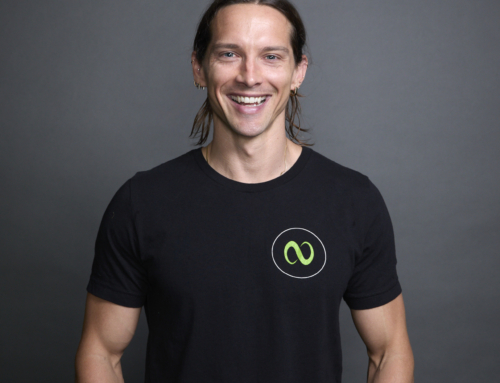By Daniel Lucas…
Today, let’s talk about a different kind of stress—repetitive stress. The kind of stress that results in smaller, nagging aches and pains that you might “live with” for a long time. The top four causes of repetitive stress issues are:
- Sitting – I count sitting as repetitive stress because of how often and long people sit while at work or home. Sitting is a good way to wipe out your functional strength in your lower spine, hips and shoulders. Prolonged sitting shifts your posture, turns key stabilizing muscles off, and has even been linked to de-activating genes that are integral to metabolizing fats.
- Computer and phone use – We spend a large part of our lives now on our phones, tablets and computers. All this use leads to a forward head posture and rounded shoulders. Holding the phone for extended periods of time adds further stress to the neck and shoulders, as well as your wrists.
- Sleeping – Sleeping on the same side of your body for 20 years can take its toll! Tissue and bones being mashed up in one position for hours can weaken many of our smaller stabilizing muscles that are forced to give in to the physics of the way we sleep.
- Jackets and Bags – If we think in terms of posture, the idea of winding back our upper arm bones (humerus) to put on a jacket or carry a bag—especially doing it over and over again—can become a major problem for shoulders. Especially a shoulder that’s weaker or had a past injury. Bags and jackets end up tugging in weird angles on your neck, shoulder, ribs and hips.
So what can we do about everyday repetitive stress? Here are four things you can do to become more aware of the stresses in your daily life and counteract them.
- Be mindful – Your connection to your body is your fist line of defense in taking care of yourself. Pay attention to the things you do repetitively that don’t serve your body, and make a conscious change.
- Do the opposite – Change can be challenging, so let’s keep it simple! Put your jacket on with the opposite arm. Sleep on your opposite side or your back. Wear a lighter bag, or consciously switch the way you hold it.
- Be consistent – You will start feeling better after you take action, so remember that if you slip back into your old habits. The secret of success for any new movements, patterns or systems is consistency.
- Train for Life – Develop a quality training program that addresses the postural muscles and patterns as well as the big mover muscles. You’ll notice that your body will really respond to the right movement patterns in a positive way, so make it a part of your life.






